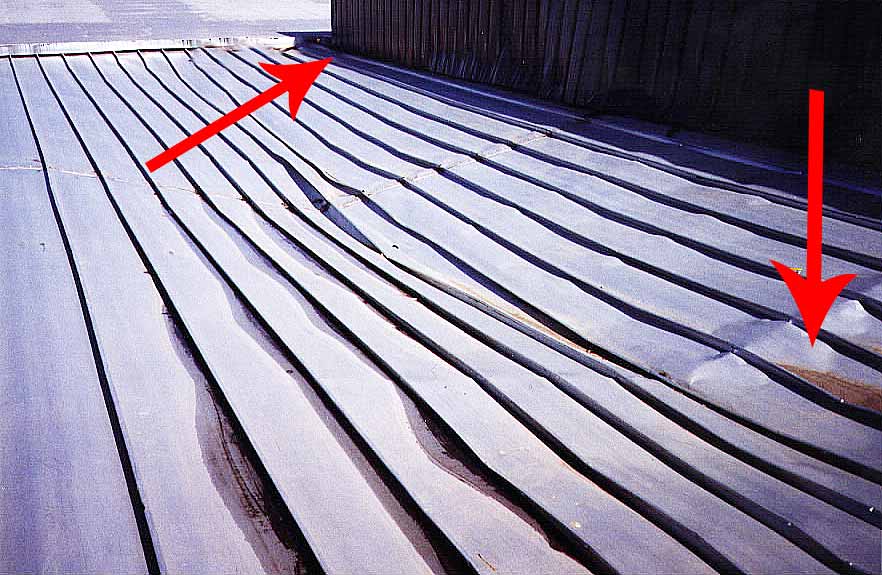Damage to a self-storage metal roof is a matter of when, not if. Learn to look for these six common problems and why restoration may be better than a full replacement.
Metal roofs, like those installed on many self-storage buildings, wear extremely well, but they can be prone to specific issues if not properly installed or maintained. Roofs are constantly exposed to two unavoidable elements: the sun’s ultraviolet rays and water. Though the roofing industry is researching and implementing innovative ways to to combat the damage caused by these threats, they can still wreak havoc on property and disrupt operation.
As a self-storage operator, you should regularly and thoroughly inspect your metal roofs. When you do, look for these six common anomalies:
- Surface rust: Panel rusting can become a major problem if left unattended. Apply an inhibitor on infected areas to keep it from advancing.
- Deflection: Crimped or bent panels can lead to water ponding. Leaks and rusting can be direct results of this issue.
- Punctures: Punctures often occur due to heavy foot traffic on the roof and can occur during construction, regular maintenance or the installation of HVAC (heating, ventilation and air-conditioning) equipment. Sharp objects falling on the roof can also contribute to the problem.
- Incompatible metals: There are several types of metal used on roofs including copper, steel, stainless and galvanized, but not all of them play nicely together. Incompatible metals can cause cracking and rust spots and prohibit water flow.
- Fastener issues: There are two types of metal-panel attachments: clips, and fasteners with rubber washers. Clips fasten to the purlin. Fasteners are concealed once the laps on the panels are seamed or crimped together, typically with a sealant underneath. They’re self-drilled approximately every 2 square feet. Over time, the fasteners back out, leaving holes or gaps between the metal and washer, which opens the roof to water intrusion.
- Restricted movement: A metal roof should be designed to move. If a repair product is applied that doesn’t allow for proper elongation or flexibility, the panels will continue to move, but the patch won’t, causing problems beyond the original roof leak.
While regular roof management comes with its own set of expenses, ignoring small damage today can lead to major problems tomorrow. Failure to address leaks and other impairments can lead to widespread damage to units and their contents.
Restoration or Replacement?
When one or several of the above issues is discovered or recurs, it must be time for a roof replacement, right? Wrong. A restoration might be more cost-effective. With renovation work, the focus is on extending the life of the roof you already have, not jumping into an expensive and possibly unnecessary project that jettisons several years of remaining roof life.
Restoration isn’t just patchwork; it’s a permanent re-roofing solution. Keep in mind, too, that some contractors can perform the work in stages—sometimes over several years—allowing for budget flexibility. Another benefit is once a roof is repaired and restored, it can be covered under a new warranty, allowing you to reset the clock on its life expectancy.
Damage to your metal roof is a matter of when, not if. So once an area is compromised, consider a professional restoration to extend roof life and free up maintenance and operational dollars for other needs within your self-storage business.
This article about metal self storage facility roofs was written by
Anthony Vross of Simon Roofing in Youngstown, OH





